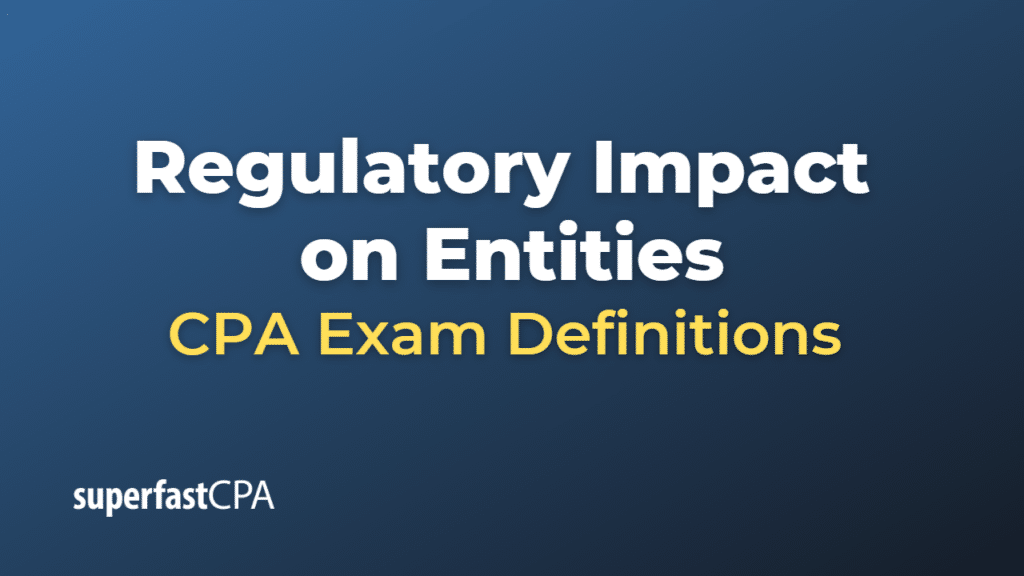Regulatory Impact on Entities
Regulatory factors can impact an entity, its operations, and the inherent risk of material misstatement in its financial statements. Regulatory factors refer to the various rules, requirements, and oversight imposed by regulatory bodies or government agencies that can influence an entity’s operating environment and financial reporting.
Some ways in which regulatory factors can impact an entity include:
- Compliance requirements: Regulatory bodies often impose various compliance requirements on entities, such as financial reporting standards, tax laws, environmental regulations, and industry-specific rules. Compliance with these requirements can affect an entity’s financial performance, increase the complexity of its operations, and lead to additional reporting obligations.
- Changes in regulations: Changes to regulatory requirements can create uncertainties and require significant adjustments to an entity’s operations, systems, and processes, potentially increasing the risk of material misstatement during the transition period.
- Regulatory enforcement: Entities may face regulatory enforcement actions, such as fines, penalties, or sanctions, if they fail to comply with applicable regulations. These enforcement actions can impact an entity’s reputation, financial performance, and the risk of material misstatement in the financial statements.
- Licensing and permits: Entities may be required to obtain licenses or permits to operate in certain industries or jurisdictions, which can impact their operations, access to markets, and financial performance.
- Industry-specific regulations: Some industries have unique regulatory requirements that can increase the complexity of financial reporting and the risk of material misstatement.
These regulatory factors can influence the inherent risk of material misstatement in several ways:
- Complexity of transactions: Regulatory factors can increase the complexity of an entity’s transactions, such as accounting for taxes, compliance with industry-specific regulations, or the recognition of liabilities arising from regulatory enforcement actions, potentially increasing the risk of misstatement.
- Estimation uncertainty: Regulatory factors can create uncertainties in the estimation of assets, liabilities, or provisions, leading to a higher risk of material misstatement due to estimation errors or the use of inappropriate assumptions.
- Management bias: Management may have incentives to manipulate financial results, downplay risks related to regulatory factors, or make aggressive accounting estimates to meet regulatory requirements, targets, or portray a positive image, increasing the risk of material misstatement.
- Disclosure requirements: Entities may be required to disclose information related to their exposure to regulatory factors, such as risks, contingencies, or compliance with specific regulations, which can increase the risk of material misstatement due to incomplete or inaccurate disclosures.
Auditors should consider these regulatory factors when assessing the inherent risk of material misstatement during the planning and execution of an audit. Understanding the impact of regulatory factors on an entity’s operations and financial reporting can help auditors design appropriate audit procedures to address these risks and provide reasonable assurance that the financial statements are free from material misstatement.













